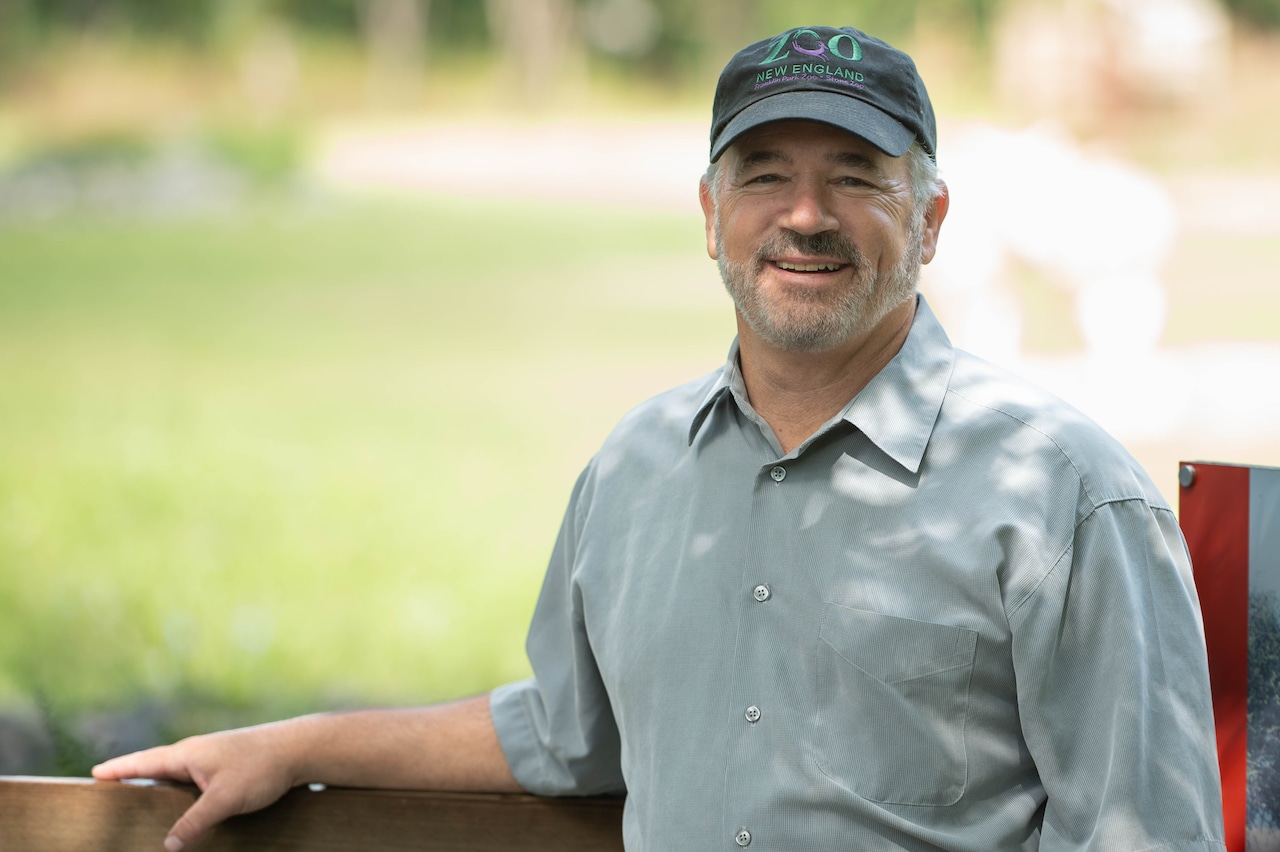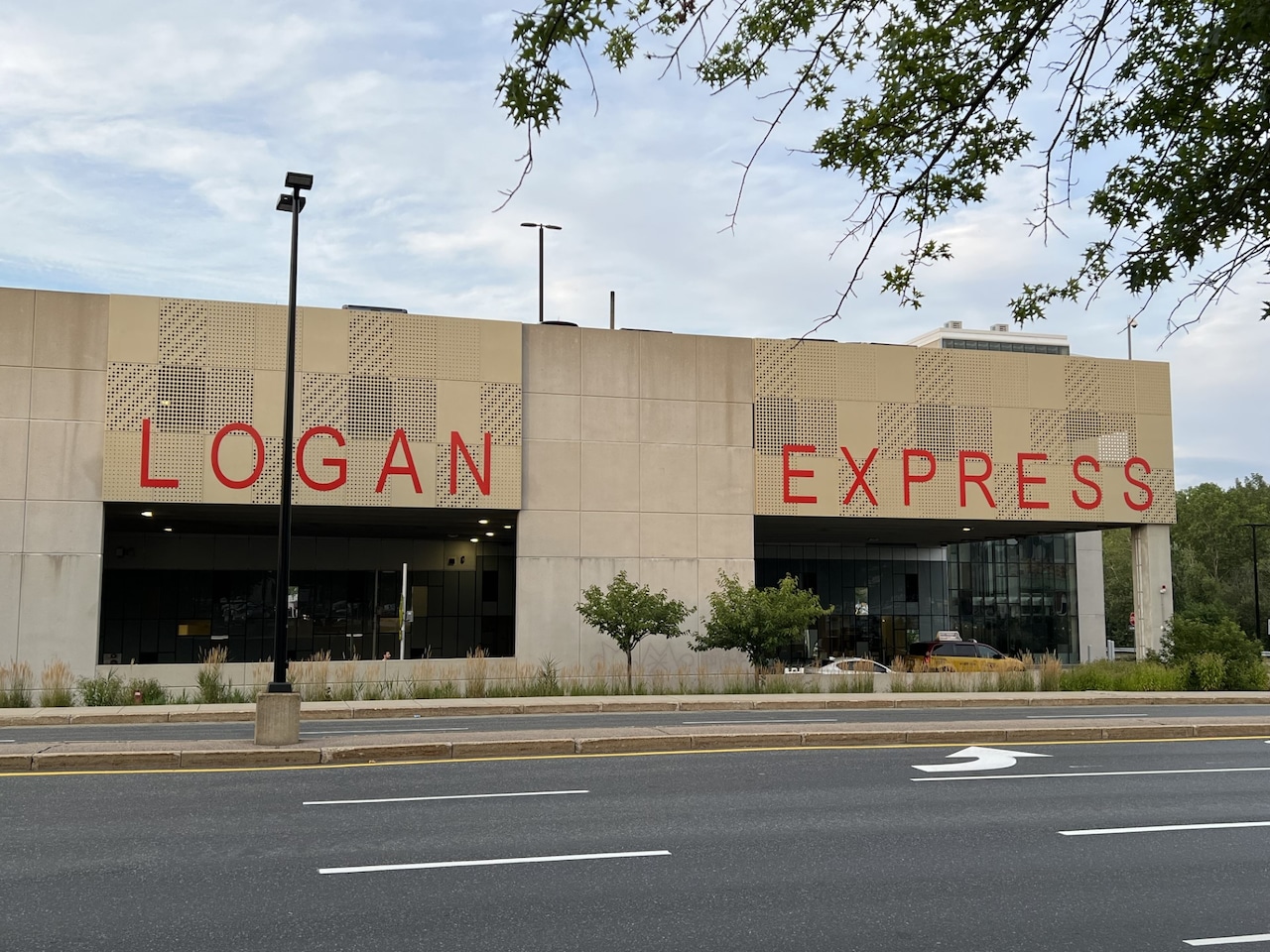When John Linehan called out “Chad” at the Franklin Park Zoo, a 16-foot tall, cream-colored giraffe dappled with brown spots ambled toward him.
Dressed in khaki and a ball cap, Linehan stood at the wooden fence and smiled to greet the 3,000-pound animal with a wave as he came closer. Chad paused briefly, then continued on across his Savannah grassland enclosure.
For Linehan, working with animals has been “a lifelong passion.” What drives him is the “joy of enlightenment” on zoo visitors’ faces.
Linehan, 65, is the CEO of the nonprofit organization Zoo New England, which manages the Franklin Park Zoo in Dorchester and the Stone Zoo in Stoneham.
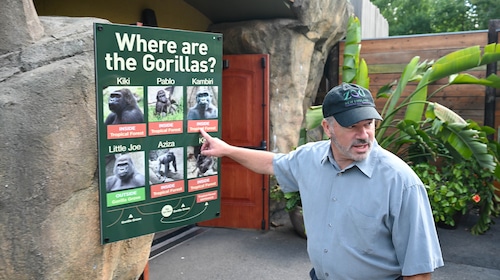
One of John Linehan’s favorite exhibits is the gorilla exhibit.Sebastian Restrepo
During his 43 years working at the zoos, he has become a fixture in advancing conservation and education with a focus on animal welfare through Boston’s public intersection of humans and wildlife.
Linehan announced his retirement in July as he looks to spend more time with his family — including his growing number of grandchildren.
While he’ll leave behind experienced executive and management teams, those who know Linehan said it will be hard to find someone who emulates his empathy and hands-on leadership.
“I’m so happy for John … but anytime there’s a big change at the top of an organization, there’s a little bit of uneasiness and uncertainty,” Bob Chabot, COO of Zoo New England, said.
The nonprofit’s board of directors recently formed a search committee and voted to hire a professional firm to assist with the search for a new CEO.
While change can be “hard and unsettling,” Chabot said, “a new leader will open up a lot of possibilities and opportunities that wouldn’t come any other way.”
Under Linehan’s tenure, Franklin Park Zoo and Stone Zoo underwent a period of dynamic change. Both transitioned from state ownership to a private nonprofit business model, multiple new exhibits were constructed and existing spaces were refurbished. Funding and revenue were stabilized.
Today, over one million people visit the zoos each year — 10 times more than when Linehan first arrived at the zoo.
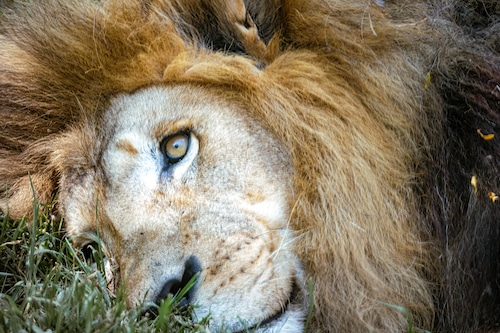
Dinari, the African Lion can be seen at Kalahari Kingdom inside of the Franklin Park Zoo.Sebastian Restrepo
“John was involved in bringing this so far along and the progress that he — and we — made … there’s so much momentum, good work and things in place that I’m not concerned we’ll lose any of that,” Chabot said.
After Linehan’s eventful career, the CEO said he’s in no rush to leave and plans to maintain a relationship with the zoos after this retirement.
‘I’d set goals and set out to achieve them.’
In 1980, Linehan was 21 years old and had just earned a degree in wildlife management from the University of Maine when he heard there might be an opportunity for him to get a job “in the wilds of Africa” through the Franklin Park Zoo.
“I actually didn’t like zoos back then; frankly, I ended up almost stumbling into this job,” Linehan said with a laugh.
When he called the zoo, he was told the connections he was looking for to get a job in Africa were “stale,” but he could have a temporary job at Franklin Park as a laborer and take care of birds.
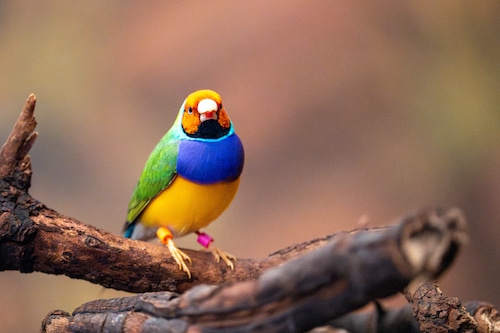
These very colorful Gouldian Finches can be seen inside the Bird’s World exhibit at the Franklin Park Zoo.Sebastian Restrepo
“I figured I’d learn something and said, ‘I’ll take it while I’m looking,‘” he recalled thinking. As he learned more about the zoo — which was underdeveloped, attracted less than 100,000 visitors per year and was state-owned at the time — he discovered “a lot of open niches” where he could make a difference.
“I’d set goals and set out to achieve them, and then make new goals. I had lots of opportunities for professional growth, and that’s what kept me here,” Linehan said.
Those goals included transitioning from a state agency to a nonprofit business management model, reopening Stone Zoo after it was closed in 1990 and obtaining accreditation for both zoos.
At the time, the Boston zoos had been owned by the state of Massachusetts through the Metropolitan District Commission (MDC) since 1958.
“It was not an efficient way to manage an organization that had to be nimble,” Linehan said.
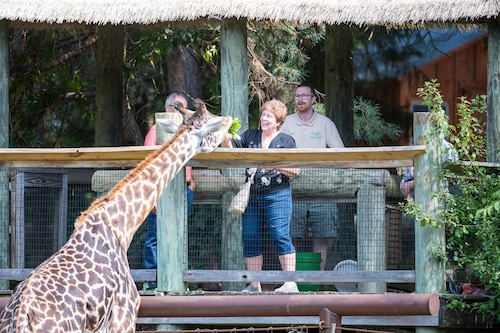
With reservations, you too can enjoy feeding Giraffes from Giraffe Terrace inside of the Franklin Park Zoo.Sebastian Restrepo
MDC ownership brought “stiff bureaucracies” that made all processes too long. It affected everything from bringing in contractors to fix equipment, to hiring freezes that led to staff loss with no replacements, he said.
Pest control only came to the zoos once a year under the state’s contract, and welfare issues, such as a lack of proper veterinary care and limited access to specialty animal foods were also a problem. Fundraising was “almost alien” to the state, Linehan said, and there was no philanthropy.
At the time, the Boston zoos were the only in the country to be owned by the government.
In 1991, when Linehan was a senior zoo attendant, the transition was finally made to the nonprofit Commonwealth Zoological Corporation, now called Zoo New England.
Linehan testified at legislative hearings on the matter and led the coordinations with the Philadelphia Zoological Society, which was hired to assess the state of affairs at the zoos. These opportunities heightened Linehan’s position within the new nonprofit, which had no president at the time.
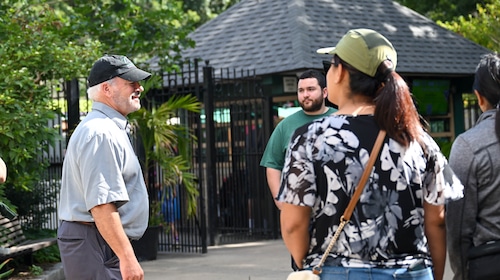
John Linehan seen here near the entrance of Franklin Park Zoo talking to a large group of peopleSebastian Restrepo
“When we went to the nonprofit management model, I got to basically have my pick of staff that wanted to stay at the zoo, and those that didn’t could stay with the MDC … we got to write a whole new organizational structure,” Linehan said.
He met Chabot in 1987 while the tropical forest pavilion was being built at Franklin Park Zoo. Chabot was a contractor installing plants and Linehan was an attendant.
Chabot now credits Linehan with his own 30-year career in zoos. After the nonprofit transition, Chabot was hired in 1991 as part of the new team to start a horticultural program at Linehan’s recommendation.
A bumpy start for the new nonprofit
Despite the nonprofit management’s expected benefits, hundreds of thousands of dollars went unpaid to utility companies for years as the zoo tried to adjust and grow, Linehan said. Stone Zoo was still closed and despite the new, partially constructed tropical forests, Franklin Park Zoo was “hardly even active.”
After the transition, the state significantly reduced its government funds to the zoos, causing Franklin Park to “lose all the momentum,” Linehan said.
The only reason either zoo survived after the transition was because of the core team of 70 or so employees who had been retained or brought on, he said.
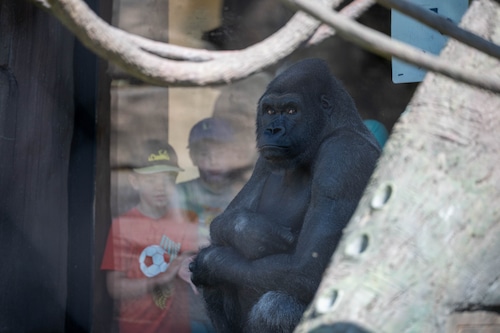
Kids flock to look at the gorillas inside of Gorilla Grove at the Franklin Park Zoo.Sebastian Restrepo
While Stone Zoo was able to reopen in 1992, it took over a decade of more work from Linehan, Chabot and their team to see signs of reinvigoration, such as increased attendance numbers.
“We really struggled for a number of years and were really handicapped when we first went to this private nonprofit model … we only survived, frankly, because of the dedication of the staff. Being able to hire the right people made a huge difference,” Linehan said.
He recalled how some workers went five years without pay raises, while many volunteered to work on their days off.
“We really should have gone bankrupt and we didn’t, because [the staff] were so dedicated and committed to the animals and the zoo’s success,” Linehan said. He added the overdue utility bills were later repaid once they “got on their feet.”
Revitalizing Franklin Park and Stone zoos
After the transition, Linehan, Chabot and their team dug in their heels to complete their goals of revitalizing Franklin Park Zoo and Stone Zoo.
“When I was here for that first 10-year stint, John and I became so professionally close — him being the lead animal person, and me being the lead plant person — we always worked together … and we both learned how to be really resourceful with limited resources,” Chabot said.
He described multiple successful exhibits the duo opened in the 1990s, including the butterfly enclosure, the lion exhibit and Savannah grasslands at Franklin Park Zoo.
The Yukon Creek, which has Canadian wildlife, and the wolf exhibit were projects developed and finished at Stone Zoo during that time.
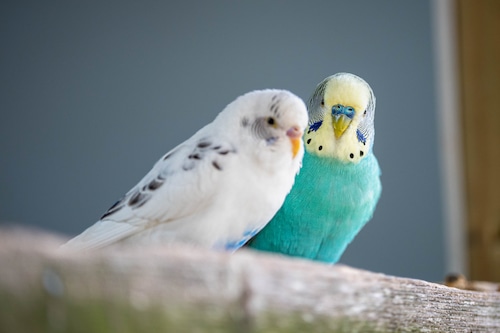
The seasonal Aussie Aviary allows for bright Budgerigars to eat out of your hands.Sebastian Restrepo
The tropical forest was only half-constructed before the switch to nonprofit ownership and was finally finished about 15 years after it was started.
The Franklin Park Zoo was accredited by the Association of Zoos & Aquarium in 1990, which Linehan called an “extremely rigorous achievement” and was important because the legislation that passed with transferring the zoos to the nonprofit required they be accredited. The Stone Zoo was first accredited by the AZA in 2004.
Besides being mandatory, accreditation is “good housekeeping,” that shows a zoo meets or exceeds high standards of living for its animals, maintenance for its guests and conservation efforts, Linehan said.
Linehan takes over
By 2002, Linehan was named CEO of Zoo New England. His career path had taken him from a senior attendant position working with birds to an attendant with mammals at Franklin Park Zoo and then a stretch at Stone Zoo. He had worked as a zookeeper, held at least three curator positions and was the Vice President of Living Collections.
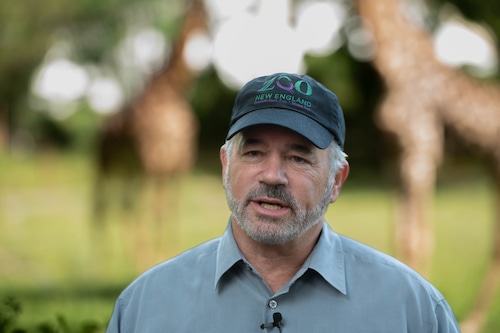
John Linehan, President and CEO of Zoo New England, gave an interview opposite Giraffe Terrace at the Franklin Park Zoo.Sebastian Restrepo
“You’ll find a lot of directors and CEOs that are … you can look at their resumes, and see they were just climbing for the sake of prestige or for a title or power,” said Pearl Yusuf, a retired general curator from the Miller Park Zoo in Illinois. She worked with Linehan in Boston for several years, beginning in 2000.
“John is none of that. He’s there because that’s where he was supposed to be,” Yusuf said.
She recalled an incident at the Hooves and Horns building exhibit at the Franklin Park Zoo while she was an assistant curator.
A 700-pound male antelope, of the “bongo” breed, had nosed its way past a zookeeper during feeding time and was in a pedestrian hallway.
To get the huge horned animal back into its enclosure, special equipment called “press boards” were required. These were large boards humans held up that helped guide an animal by simulating its usual view from inside an enclosure to keep it calm.
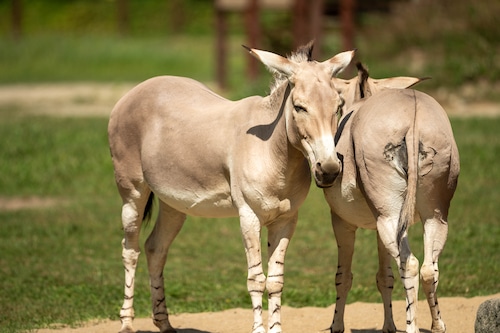
The Somali Wild Ass seen here in Giraffe Savananah at the Franklin Park Zoo.Sebastian Restrepo
Unfortunately, the boards were kept inside the bongo antelope barn at the time — meaning the only way to get the loose antelope back inside was to enter the barn without any equipment.
“When I walked in, [the bongo] turned around and looked at me. I just said, ‘Everything’s fine. Everything’s fine. I’m just going over here,” Yusuf recalled. She grabbed the press boards, called another keeper to help, and was able to inch the striped beast back into his enclosure.
“We’re wiping our brows and I go outside of the barn, and there’s John Linehan standing there, completely out of breath,” Yusuf said.
“I said to John, ‘Did you run up here?’ We’re a fair distance from the main office and I know he was in an important meeting,” she said.
“He said, ‘You had to go in with a bongo. I wanted to be here to help,’” Yusuf said.
“When he heard what was going on, he left the meeting and sprinted up to Hooves and Horns because he knew he could help, and he wasn’t going to let us go through it alone. That just typifies who John was to me,” she said.
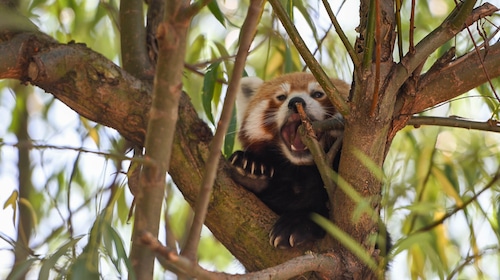
The Red Panda takes a big yawn and then nestles in for a nap.Sebastian Restrepo
Conservation and education
Besides efforts to physically improve the zoos with updated enclosures and more animals, Linehan’s list of conservation and education projects pioneered and supported by Zoo New England is extensive.
“I’m gratefully one of the many people who was able to change what I disliked about zoos,” said Linehan, in reference to animals’ enclosures and treatment in the mid-1900s.
This year marks the 25th anniversary of ZooTeens, a summer program developed for Boston teenagers to gain work experience at Franklin Park Zoo in animal care, education, horticulture, marketing and children’s camp leadership.
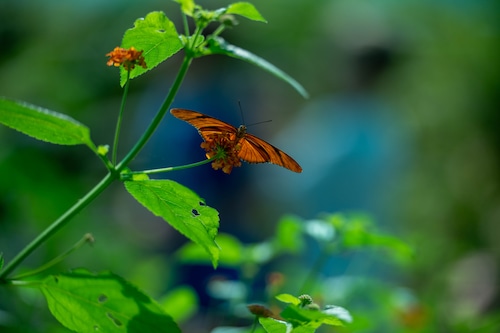
Zoo visitors can get up close and personal with the various butterflies in the Butterfly Oasis.Sebastian Restrepo
In his eyes, educating people about wildlife while they’re still young is imperative for developing a love for conservation.
One conservation project started by Zoo New England in 2006 is what Linehan called a “Noah’s Ark of frogs.”
Based in Panama, the conservation strategy is focused on saving native frogs from a human-introduced fungus called chytrid. The fungus can wipe out entire species in mere months after it grows in an environment.
The frogs are placed in contained biospheres, and Linehan said they’ve “had great luck” reproducing many pairs. They’re now in phases of reintroducing several species to their native environments.
Over the years, Zoo New England grew large enough to financially fund conservation projects and physically send Franklin Park Zoo and Stone Zoo employees outside the country for boots-on-the-ground work.
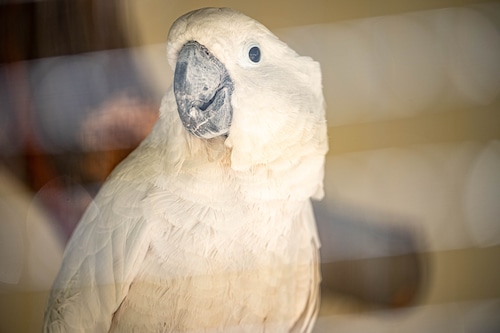
The Umbrella Cockatoo is very vocal outside of Bird’s World at the Franklin Park Zoo.Sebastian Restrepo
Zoo New England employs about 300 people between the two zooz, with around 200 employees in the off-season, Linehan said.
There was a time when the nonprofit provided funding to a small number of conservation groups, such as the Snow Leopard Trust because they did such great work, Linehan said.
“Now, we just had one of our keepers recently return from doing work [for Snow Leopard] in Mongolia, helping them get camera traps set up in the mountains of central Mongolia,” he said. In addition, Linehan mentioned the award-winning program called One Health in Madagascar, which is aimed at bringing together human medicine, veterinary medicine, and environmental and ecological health.
As for the zoo itself, Linehan said Franklin Park looks forward to unveiling a new $18 million African experience exhibit in 2026.
The enclosure will have a new African Penguin Coast and has plans for ostriches, zebras, wildebeest, warthogs and more in its expanded African Savannah.
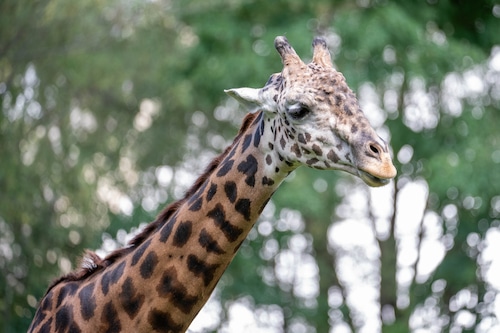
The Masai Giraffe at the Franklin Park ZooSebastian Restrepo
Last year, the zoo spent $4.5 million solely on a new HVAC system for its tropical exhibit, Linehan said. The new $9.1 million Gorilla Grove exhibit was also finished in 2022.
When the zoos were initially privatized, Linehan said they relied heavily on the little state funding that was received at the time.
Now, Zoo New England can thrive on a public-private partnership with a $6.6 million annual subsidy from the state, which makes up a small percentage of the zoo’s $25 million total budget. This means the zoo is free from the strain of relying on the state to operate.
“My dreams will never stop growing,” Linehan said.
“I’ve been at this a long time, and my passion does not decrease, but other areas have become important to me, such as being able to bring my grandchildren here [to the zoo] and spend time with them,” he said. “I have given so much to the zoo over those years and I had to miss a lot of family events, and I want to get a little of that back. I want to continue helping the zoo move forward, but just not on a full-time basis.”


